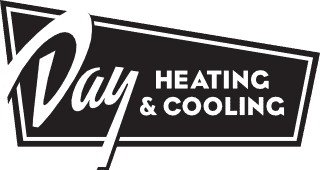What to Do When Your Furnace Is Leaking Water

If you notice a pool of water has formed around the furnace in your Oregon home, don’t be alarmed. In most cases, this is not a serious or expensive problem—it is a pretty common issue.
However, ignoring this problem could lead to other issues, such as water damage and mold. Reach out to our Day Heating & Cooling professionals so we can investigate it for you. We take great pride in offering practical solutions that add comfort and safety to your Corvallis home or business.
What Type of Furnace Do I Have?
It can be helpful to know what type of furnace you have in your Corvallis home. In general, you either have a standard, also called a conventional, furnace or you have a condensing furnace.
The biggest difference between the two types of furnaces is the number of heat exchangers each one has. The heat exchanger is the internal component where the furnace heats the air. A standard furnace has one heat exchanger and a condensing furnace has two.
One way to know which type you have is to check your furnace’s exhaust pipe. If it’s a PVC (hard, white plastic) pipe, your furnace is condensing. If not, it’s most likely a standard furnace.
Another way to find out is by looking on the side of your furnace for the yellow ENERGY STAR® label. This displays the annual fuel utilization efficiency (AFUE) rating of the furnace.
If the AFUE is 90 percent or more, it is likely a condensing furnace. These are the most energy efficient and the Department of Energy (DOE) states the AFUE rating can reach as high as 98.5 percent. High-efficiency furnaces are more prone to leaking because of their condensation buildup.
No matter what type of furnace you have in your home, our Day Heating & Cooling HVAC professionals can diagnose the reasons your furnace is leaking water and repair it in no time.
Why Is My Furnace Leaking Water?
Listed below are a few reasons your furnace could be leaking water. Some of these issues can be resolved with a repair, but a replacement could be necessary for others:
• Water Condensation
This is the most common reason for a leaking furnace. Condensing furnaces go through a heating process where moisture in the air condenses and travels through piping to a drain. If the piping is clogged, or the pump is broken, leaking can occur.
• Incorrectly Sized Exhaust Pipe
Another reason your furnace could be leaking water is because your exhaust pipe is the wrong size, or it could be broken. When your exhaust pipe is the wrong size, gas may not be able to properly exit and can start getting cooler, resulting in a buildup of condensation.
• Humidifier Leak
If you have a humidifier attached to your furnace, then water could actually be seeping in from the humidifier instead, making it appear as though the furnace is leaking when it’s not.
• Drain Clog
If you have an air conditioning system connected to your furnace that shares a condensate drain, then it is possible the drain could be clogged.
• Defective Secondary Heat Exchanger
A defective secondary heat exchanger puts your safety at risk, as well as causes water to leak at the base of your furnace. A cracked heat exchanger allows for carbon monoxide, sulfur dioxide, and nitrous oxide to leak inside your home, resulting in possible sickness and even death. You will need a furnace replacement if your heat exchanger is damaged.
Have Your Furnace Leak Fixed by a Day Heating & Cooling Professional Today
You may be able to figure out why your furnace is leaking water, but if you are not certain or need help correcting the problem, then it’s time to reach out to the furnace experts at Day Heating & Cooling. We will diagnose the problem and repair that leak quickly. If you are in or near Corvallis, OR, contact our team at 503-363-4822 or request service online!
